Tasting Real Wine in the Napa Valley
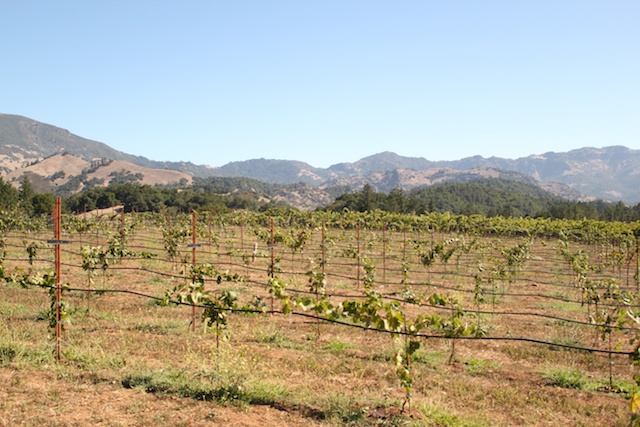
I’d be the first person at K&L to admit that I don’t know much about the producers in the Napa Valley. Despite the fact that I can attest to the flavors present within many of the Napa wines in our store, I don't know anything beyond that. Part of this is due to the fact that my spirits buying duties have drastically cut back on the amount of wine I am drinking at home these days. Most of the reason behind this gap in my knowledge, however, lies in the fact that I just don’t enjoy this type of wine anymore, causing me to focus my attention elsewhere. As someone who only drinks wine with a meal I’m interested in low alcohol, unoaked wines that pair well with food. Most of the cabernets and chardonnays being made in Napa right now, however, are the exact opposite – high alcohol with tons of toasty new oak. They are wines made for people who like to drink, rather than eat. Despite my predjudice, I signed on to join the K&L tasting weekend because I thought I’d give Napa another chance. There had to be someone still making real wine up there and I thought it would be nice to know a bit more for when I’m helping a customer.
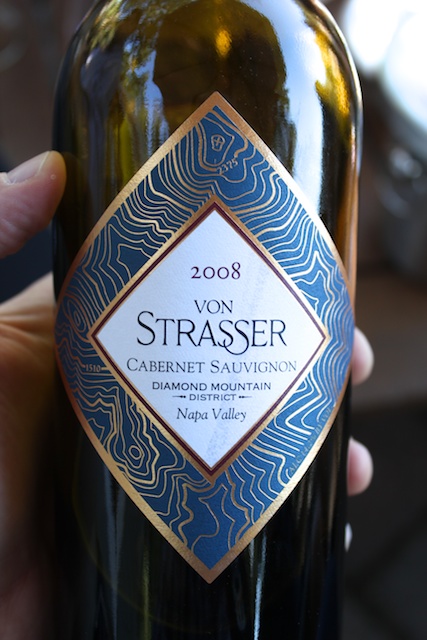
The producers we visited in Napa were all mountain properties, which made the trip much more special. There's something about mountain vineyards, with their rocky soils and microclimates, that allows them to make wines of distinction - wines that taste different from the run of the mill sites on the valley floor. The morning began at Von Strasser, a cabernet focused producer located in Napa’s Diamond Mountain district in Calistoga. We were all hurting a bit from the night before, but as wine professionals made sure we were ready to taste and open to learning. Rudy Von Strasser joined us and told us about his history as a winemaker, beginning with a stint back at Chateau Lafite in 1985. He was the first in California to grow Grüner Veltliner and the wines he makes from the native Austrian varietal are legit - full of white pepper and clean acidity. As a producer who specializes in cabernet sauvignon, however, he wanted his Diamond Mountain property to stand out and helped establish it as an official appellation, distinguishing it from the other Napa producers whose fruit isn't quite as special.
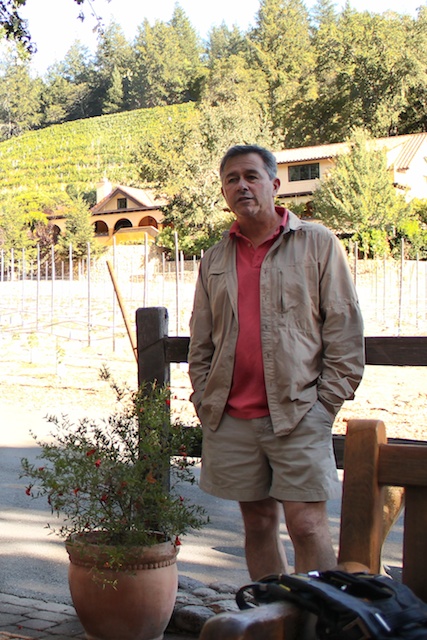
Tasting the cabernets of Rudy Von Strasser was a true pleasure. Since we have yet to carry many of his wines, it was the first time through for most of us. His 2008 Cabernet shows beautiful red fruit aromatics with concentrated berry flavor, plenty of earth and fine, integrated tannins. They drink almost like Washington reds with the black fruits and coffee bean flavors, but with more structure. His 2008 Estate cab is just a bigger version of the regular cab with more old school grit. The Reserve Red, while the most expensive of the bunch, is not quite as impressive because it seeks to bridge the gap between his old world style and the public's new world palate. However, it's still a far cry from the jammy fruit bombs many producers are currently releasing. The wines are balanced, interesting, and restrained. They represent Rudy's philosophy well - keep the alcohol low and the flavors in check. An impressive and unobtrusive way to begin a long day of cabernet tasting.
Von Strasser Winery - 1510 Diamond Mountain Rd. in Calistoga (707) 942-0930
Tastings are available by reservation.
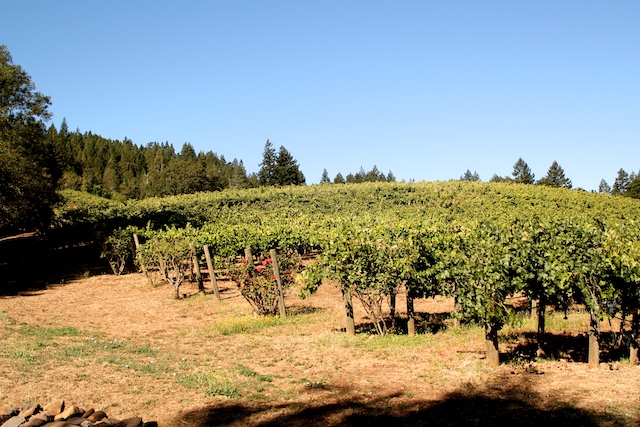
As we drove through the gate into Storybook Mountain Vineyards, I really had the feeling of entering a fairy-tale-like world of greenery. Rolling hills with sweeping vineyards trellised up and down each of them, disappearing behind wooded groves and growing right to the top of steep mountain slopes. Storybook was established on the site of the old Grimm Brothers winery, which had been growing zinfandel since the 1880s, but was gutted by a terrible fire in 1970s. When Jerry Seps bought the abandoned property in 1976, Storybook seemed like the proper homage to the old name of the site. The term terroir doesn't really mean much unless you can visit a vineyard site in person. When standing in the 96 degree heat of one vineyard site and then immediately moving into the 72 degree shade of another, it becomes clear why Storybook's amazing zinfandel wines have names like "Eastern Exposures" or "Mayacamas Range." The grapes coming from different vineyard sites are subjected not only to different soils, but also various degrees of temperature and sunlight. Because the EE vineyard faces east, it stays cooler in the afternoons as the sun sets behind the mountains in the west.
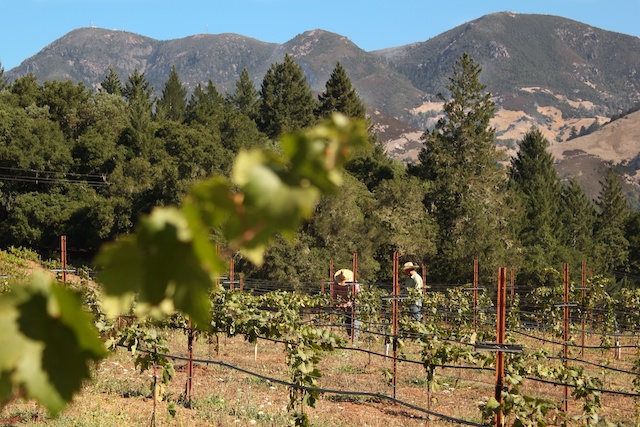
While having seen the Storybook bottle on our shelves for years, I had had little experience with the wines. I never really thought Napa zinfandel was something I would want to be drinking, expecting it to be overripe and sweeter than Santa Cruz mountain favorites Ridge or Sonoma's Joseph Swan. One sip of their wine was all I needed however to realize that I had made a terrible misjudgment. The 2008 Mayacamas Range Zinfandel is simply spellbinding - gorgeous aromatics, red fruits, black pepper, subtle spices, and a refinement that has to be tasted to be believed. There's nothing excessive about this wine, despite the fact that it's made from a grape known for going over the top. Zinfandel has become a wine consistantly high in alcohol, sweetness, and oak. With Storybook, however, the fruit is elegant, the textures soft and balanced, the flavors gentle and careful. When we got around to sampling the 2008 Eastern Exposures I was spinning (and not from my grueling hangover). The EE is so concentrated with red berry and sangria flavors that it's amazing how graceful it actually is. The pepper is there again and the 8% of viognier that's added gives it a slightly perfumy note. These are absolutely stuning wines and I was absolutely embarrassed that I didn't already know this.
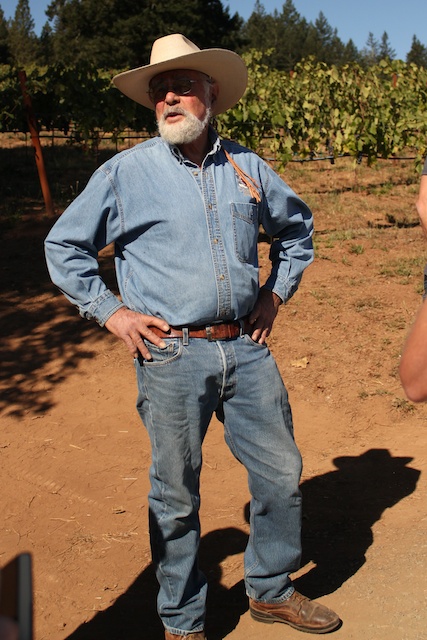
Jerry Seps owns and runs Storybook Mountain Vineyards located at 3835 Highway 128 in Calistoga. Tastings are available Monday through Saturday by reservation at (707) 942-5310.
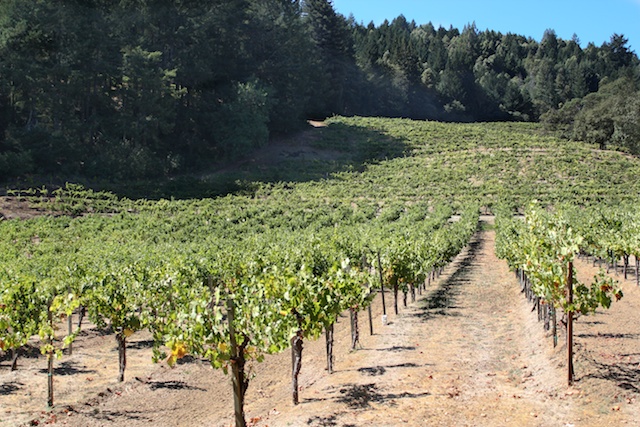
Stony Hill is located in the Spring Mountain district of Napa, an area known for fantastic cabernet. So why is this producer making almost exclusively white wines from chardonnay, riesling, and gewurztraminer? Because when the McCreas planted the vines a half-century ago there was no one around to tell them exactly what to grow! Yet their location on the mountain proved to be the perfect climate for making white wines of purity. elegance, and typicity. The McCreas had a fondness for white Burgundy so they planted the grapes they personally loved. To this day they still use Montrachet from Burgundy yeast to ferment their chardonnay.
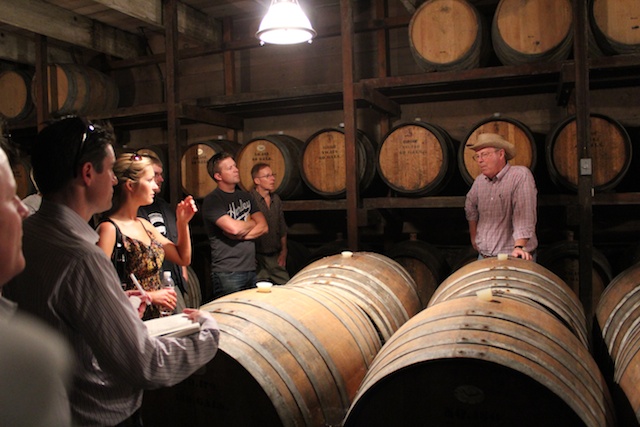
Part of the reason why the Stony Hill wines taste so good is the quality of the fruit and the location of the vineyards. The other reason is the winemaking. Mike McCrea doesn't use any new oak if he can help it - most of his wines are aged in 30 year old puncheons! He also prevents the wines from undergoing malolactic fermentation - a natural process where the tart malic acid is converted into the softer lactic acid resulting in a softer and more supple wine. Most Napa winemakers allow malo (for short) to happen because they want that buttery flavor that people love so much, but not Mike. With the higher acid content preserved, his wines taste fresh, vibrant, exhilarating, and real. When we got back to the house for some tasting, we were treated with a sampling of white wines, but also a few new reds that are only now beginning to leave the winery.
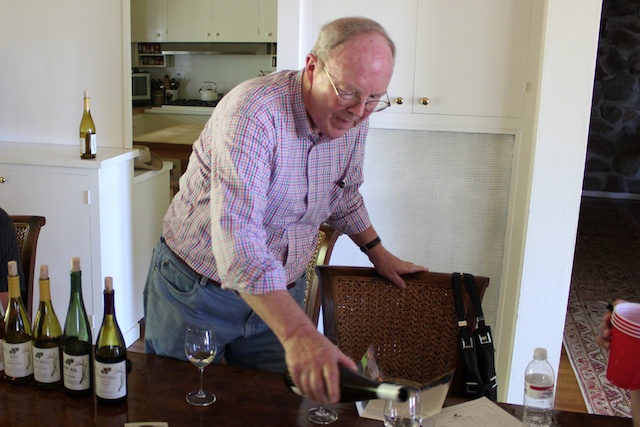
We began with the 2010 Gewurztraminer which sang of grapefruit, lychee nuts, and aromatic spices like ginger. Low in alcohol, streaking with minerals, and refreshing as hell. I immediately bought one when I came into work today. The 2010 White Riesling was also impressive with beautiful balance and a light, lean, almost saline quality. We were treated to a 1996 riesling as well and it's amazing how well these wines hold up. The whites from Stony Hill are serious wines - they will last decades in a well-kept cellar. The 2009 Chardonnay had great acidity and that focused acidity that makes one's mouth water instantly. I was surprised to see that we currently had a selection of older vintages, so I picked up the 2001 Chardonnay to see how ten years in the bottle changes this beautiful wine.
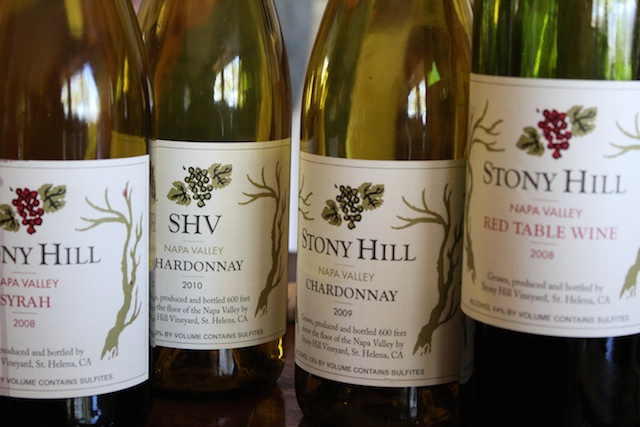
One thing you can't yet buy from K&L, however, is the new cabernet from Stony Hill that sells for ridiculously low $25 at the winery. This wine drinks like something between a properly mineral Graves and a fleshy St. Emilion - it stunned every one of us. However, being a Spring Mountain property, it makes sense that they would eventually add some cabernet vines to their arsenal. It's worth the long drive up the hillside just to get one of these bottles - believe me.
Stony Hill Winery is located off of Highway 29 in St. Helena. They are at the top of a very long, steep, one-lane road so drive safely. Tasting reservations can be made by calling (707) 963-2636. Do not miss the chance to taste here.
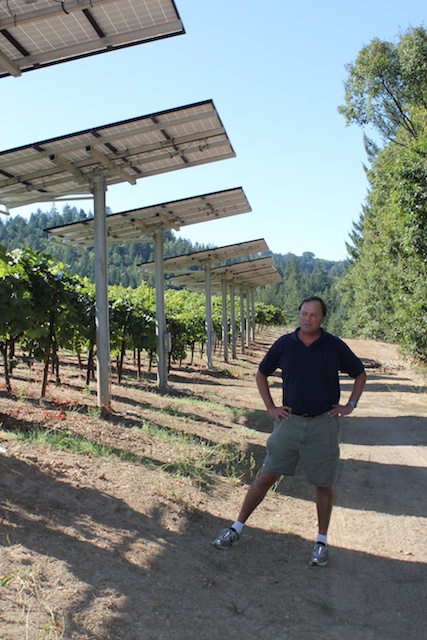
Around Spring Mountain from Stony Hill lies Robert Keenan Winery, high up in the Mayacamas range at about 1700 feet above the Napa Valley floor. Famous for their old-school merlot and wonderfully-balanced cabernets, they're also industry leaders in responsible farming and technology - solar panels sit at the far end of the vineyard, soaking up the energy from the sun and sending it back underneath the vines to power the winery. Some of the sites at Keenan get more sun than any other vineyard in the Napa Valley, so it makes sense that they would harness this energy both for their fruit and for their fuel. Despite this fact, Mike told us that they've witnessed a bit of climate change since 2005 with more rain and cooler temperatures than previously experienced.

The wines at Keenan are perhaps the most-approachable of all the wineries we visited. They are powerful, concentrated, but never lacking that juicy fruit that the average wine drinker is expecting. Like Storybook showed me with their zinfandel, Keenan also has taken the much-maligned merlot grape and made it into the Right Bank of California. The 2007 Merlot was perhaps my favorite wine of the Keenan flight - not at all plumy or overripe, but full fo structure, earthy notes, and plenty of acidity. They also make a single vineyard merlot from their Mailbox site and it's a true, old school California red wine - great fruit, but not quite ready to be consumed. It's a wine that will pay dividends for those who can wait a few years for it to truly open up - absolutely fantastic. The cabernets are also divine - again full and amazingly balanced fruit with ample acidity. The tannic structure is there, but it's not massive, so again the wines are very approachable despite their excellent ability to age.
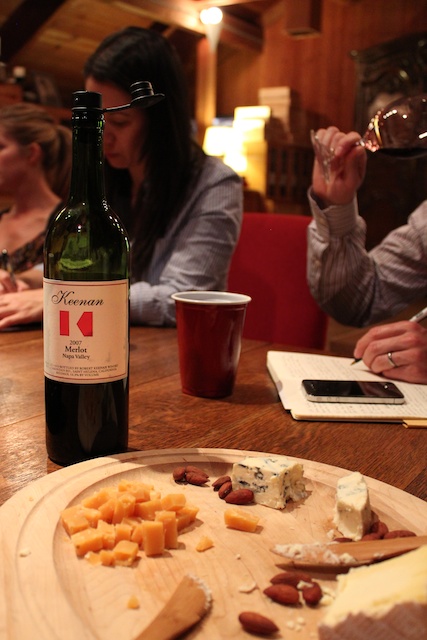
Tasting wine at Keenan is a real treat because the wines are not inexpensive. The reserve cabernet gets up into the $90 range, but at least you're getting a real wine for that price. A wine that is made from hands-off farming procedures and speaks to an actual place. The terroir at Keenan is important and getting the chance to walk through the vineyards is key to understanding how the wines themselves taste.
Keenan Winery is located at 3660 Spring Mountain Rd. in St. Helena. Tasting reservations can be made online or by calling (707) 963-9177.
So why did I feel the need to write an article about the "real" wines of the Napa Valley on the Spirits Journal blog? It's not because I'm forced to watch the "Real" Housewives of New Jersey, New York, Beverly Hills, and Atlanta on a regular basis. It's because most of you reading this live in the Bay Area and these are producers who provide an ample opportunity for a better understanding of quality booze. Ultimately this site is about alcohol and how it can make our lives happier, so I felt it to be appropriate considering that anyone even remotely interested in wine would have an absolute blast tasting these wines and visiting these properties. The views are incredible, the scenery romantic, and the wines delicious. These wines are made by people who take their craft seriously - you won't find drunken tourists in Hawaiian shirts getting housed at these tasting bars. These are wineries that understand their topography and their relationship to it. They make wines that pair well with a meal because ultimately that's what wine is for.
Plan a weekend and get yourself up to Napa. You'll be amazed at what an authentic California experience the "real" Napa can provide.
-David Driscoll
